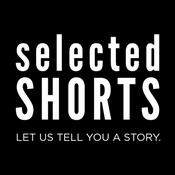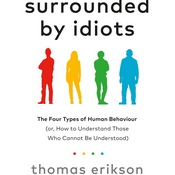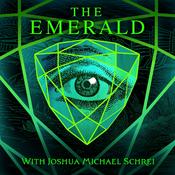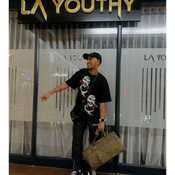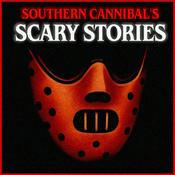Available Episodes
5 of 335
- JOHN D. ROCKEFELLER 2 - MAKING OF THE GREAT TRUST (1869–1883): Success Mindset That Built an Empire(00:00:00) 12. Built on Oil—and Rebates (01:07:56) 13. The Birth of Standard Oil (02:11:04) 14. The South Improvement Scheme (03:22:47) 15. War, Open and Understood (04:11:09) 16. The Conquest of Cleveland (05:09:06) 17. The Tide Rolls On (06:08:13) 18. Rockefeller and the Producers (06:51:43) 19. Leviathan JOHN D. ROCKEFELLER - THE MAKING OF THE GREAT TRUST (1869–1883): The Success Mindset That Built an Empire.John D. Rockefeller - The Heroic Age of American Enterprise - Chapters XII–XIX:In this powerful new episode of The Secrets of Success, we continue our deep exploration of Allan Nevins’s monumental biography John D. Rockefeller – The Heroic Age of American Enterprise. In Part 2, spanning Chapters XII through XIX, Nevins traces the transformation of a disciplined Cleveland merchant into the architect of the world’s most formidable industrial trust: Standard Oil. These chapters chronicle the turbulent years between 1869 and 1883, when Rockefeller refined his strategy, honed his organization, outmaneuvered rivals, and laid the foundation for a business empire that would change the American economy forever.This section of the book is not only a historical narrative but also a study in strategy, discipline, psychology, negotiation, long-term thinking, and the mechanics of building a dominant enterprise. For listeners seeking insight into the success principles behind Rockefeller’s rise, these chapters are essential. They reveal how vision, control, organization, and relentless pursuit of efficiency can reshape entire industries.Below you will find a clear summary of the key ideas from each chapter—perfect for anyone who wants to absorb the lessons while also understanding the dramatic events that shaped the rise of Standard Oil.XII. Built on Oil—and RebatesThis chapter opens with the crucial business reality of the post-Civil War oil industry: the chaos of oversupply, wild price fluctuations, inefficient transportation, and the fierce competition that threatened the very existence of early refiners. Rockefeller identified a single truth—transportation was the decisive cost, and those who could master it would dominate the industry.Nevins provides a detailed analysis of Rockefeller’s early focus on securing railroad rebates—discounts secretly granted to favored shippers. Rebates were legal at the time and aggressively used by many large shippers, but Rockefeller employed them with unmatched precision. Through negotiation, consistency of shipments, and financial reliability, he secured favorable rates that enabled him to price oil more competitively and reinvest profits into expansion.This chapter highlights Rockefeller’s mastery of logistics, cost control, and negotiation. The lesson: competitive advantage is rarely accidental—it is engineered through knowledge, leverage, and disciplined execution.XIII. The Birth of Standard OilThis chapter recounts the formal creation of the Standard Oil Company of Ohio in 1870, marking the shift from partnership to corporate structure. Rockefeller and his inner circle—Henry Flagler, Samuel Andrews, Stephen Harkness, and William Rockefeller—built an organization that could grow beyond local operations.Nevins describes how Rockefeller refined a new business culture defined by secrecy, discipline, efficiency, and centralized decision-making. The company’s early strategy was clear: eliminate waste, expand capacity, standardize products, and develop a national vision for refining and distribution.The chapter shows Rockefeller’s genius for organization: he understood that scale alone was not enough—what mattered was coordinated, systematic growth. His long-term thinking set Standard Oil apart from the unstable, speculative businesses of his era.XIV. The South Improvement SchemeOne of the most dramatic episodes in Rockefeller’s career, the South Improvement Company scheme of 1871–72, is explored with great detail. This was an attempt by several major refiners and railroads to stabilize the chaotic oil market through exclusive freight agreements. The arrangement would have given certain refiners—including Rockefeller—preferential rates while raising costs for independent producers and refiners.Nevins explains how the scheme’s secrecy and the perception of conspiracy sparked a massive outrage among oil producers in Pennsylvania. Although Rockefeller’s precise role remains debated, the collapse of the plan was a public relations disaster.Yet the deeper lesson is that Rockefeller adapted quickly. When the scheme failed, he shifted toward voluntary consolidation, offering to buy out competitors rather than crush them through railroad deals. The chapter illustrates Rockefeller’s ability to pivot strategically when circumstances changed.XV. War, Open and UnderstoodWith the South Improvement Scheme in ruins, Rockefeller entered an open and intense struggle with independent refiners. Nevins describes the conflict as a true industrial war marked by negotiations, acquisitions, threats, and occasional cooperation.Standard Oil began acquiring key competitors in Cleveland and beyond, offering generous terms to some and harsh pressure to others. Rockefeller’s philosophy—“Let us unite so we may all profit”—appealed to many exhausted refiners who faced unstable markets and low margins.This chapter shows Rockefeller’s relentless psychological and strategic edge: he understood that fear, uncertainty, and fatigue could drive competitors into partnership. Nevins illustrates how Rockefeller used diplomacy, financial strength, and superior organization to win battles that brute force alone could never achieve.XVI. The Conquest of ClevelandThis chapter details how Rockefeller completed the consolidation of nearly all Cleveland refiners by 1872–73. This “Cleveland Conquest” became legendary and earned Standard Oil a reputation for ruthlessness—though Nevins also emphasizes the fairness of many buyouts. Rockefeller offered stock, continued employment, or cash, depending on a competitor’s needs.The takeover was not just about eliminating rivals—it was about building a vast, coordinated, efficient refining system capable of producing uniform, high-quality kerosene at low cost.The lesson: Rockefeller recognized that efficiency, not chaos, creates long-term value. The Cleveland consolidation gave Standard Oil a powerfully integrated base from which to expand nationally.XVII. The Tide Rolls OnOnce Cleveland was secure, Standard Oil expanded across the Midwest, East Coast, and eventually into international markets. Nevins describes this era as a “rolling tide,” during which the company acquired refineries in Pittsburgh, Philadelphia, New York, and other major centers.This chapter is as much about leadership as about expansion. Rockefeller developed systems for coordination, introduced the famous “committee structure,” and insisted on consistent reporting and accounting. He also began diversifying into pipelines, barrel plants, warehouses, and tanker cars, ensuring full vertical integration.The key insight: Rockefeller’s success came from controlling every link in the chain, eliminating unnecessary costs, and constantly reinvesting profits into further consolidation.XVIII. Rockefeller and the ProducersIn this chapter, Nevins shifts to the increasingly complex relationship between Standard Oil and the independent oil producers of Pennsylvania. Distrust, resentment, and political hostility were rising. Producers feared Standard Oil’s size, influence, and negotiating power.Rockefeller attempted cooperation, offering long-term contracts and stabilizing strategies, but many producers remained defiant. The chapter examines the tension between free-market independence and coordinated efficiency—a debate still alive in modern markets.Nevins portrays Rockefeller as a disciplined, soft-spoken negotiator who preferred diplomacy over confrontation. But the deeper message is that scale inspires resistance, and Rockefeller had to balance power with restraint to maintain stability.XIX. LeviathanThe final chapter of this section describes the emergence of Standard Oil as a “Leviathan”—a giant that dominated refining, marketing, transportation, and distribution. By 1882, the Standard Oil Trust structure was established, enabling centralized control over dozens of subsidiaries across multiple states.Nevins describes the trust as an administrative masterpiece: organized, rational, efficient, and designed to integrate operations on a massive scale. Yet it also drew public scrutiny, political controversy, and accusations of monopoly.This chapter shows Rockefeller at the height of his strategic and organizational power. Standard Oil had become not just a business but a system, capable of shaping markets and setting standards. The trust represented the final form of Rockefeller’s vision: order, efficiency, integration, and long-range planning on a historic scale.Final ThoughtsPart 2 of Nevins’s biography reveals Rockefeller’s greatest talents—his ability to organize chaos, negotiate with precision, manage people with firmness and fairness, and think in decades rather than months. For listeners of The Secrets of Success, these chapters offer invaluable insights into the psychology of leadership, long-term strategic thinking, the power of organization and efficiency and the mechanics of building an enduring enterprise.This is the story of how John D. Rockefeller turned opportunity into empire—and how the systems he created still influence business thinking today.Become a supporter of this podcast: https://www.spreaker.com/podcast/secrets-of-success-master-the-mindset-of-success--5835231/support.--------7:32:32
- JOHN D. ROCKEFELLER 1 - THE RISE OF JOHN D. ROCKEFELLER, MERCHANT (1839–1869): Success Mindset That Built an Empire(00:00:00) I. The Rise of John D. Rockefeller (00:00:18) 1. I Remeber The Brook (00:56:48) 2. Boyhood at Owasco (01:45:11) 3. Family Disaster (02:15:20) 4. “I Was Not an Easy Student” (02:50:56) 5. Youth Whose Hope Is High (03:39:33) 6. A Foothold in Life (04:43:23) 7. Clark & Rockefeller (05:22:05) 8. Black Gold (06:19:47) 9. A Venture in Oil (07:05:14) 10. Boom and Depression (08:05:33) 11. Wife and Home JOHN D. ROCKEFELLER 1 - THE RISE OF JOHN D. ROCKEFELLER, MERCHANT (1839–1869): The Success Mindset That Built an Empire.John D. Rockefeller - The Heroic Age of American Enterprise - Chapters I–XI:Allan Nevins’ work on John D. Rockefeller presents the early development of a young man who would shape modern capitalism. Book I covers Rockefeller’s first thirty years, revealing not an aggressive speculator, but a careful, disciplined merchant who built wealth through organization, frugality, and strategic patience. Nevins shows how Rockefeller’s character—shaped by a strict mother, a reckless father, hardship, and religious training—became the foundation for the most formidable business system of the age. These early decades were not merely preparation; they created the methods that later defined Standard Oil.CHAPTER SUMMARIES:I. “I REMEMBER THE BROOK”The opening chapter reflects Rockefeller’s nostalgic memories of rural New York. The brook he recalls symbolizes the slow, steady patterns of nature that shaped his temperament. Nevins uses this imagery to show how Rockefeller grew to admire order, continuity, and quiet progress, qualities that later defined his business practices. While other boys played wildly, he observed and calculated. This early affinity for measured pace taught him to see growth as a gradual, purposeful movement—not a sudden leap. Thus, the brook functions as a metaphor for Rockefeller’s lifelong method: in business as in nature, progress flows most powerfully when it flows steadily.II. BOYHOOD AT OWASCORockefeller’s early life in Owasco was marked by work, strict discipline, and constant travel. His father, “Big Bill” Rockefeller, was charming but unreliable, often away selling dubious medicines. From him, John learned the dangers of careless credit, false promises, and speculation. His mother, Eliza Davison Rockefeller, instilled opposite lessons: save money, do not lie, pay debts, and embrace duty. She taught her children to tithe to the church even when they had little, reinforcing financial responsibility. Nevins emphasizes that the family’s modest means forced Rockefeller to take responsibility early, shaping him into a youth who quietly studied prices, barter, and accounting before he ever entered a business office.III. FAMILY DISASTERFinancial catastrophe hit the Rockefellers when Big Bill’s ventures collapsed. Bankruptcy loomed, and creditors pursued the family. Rather than being defeated, John observed closely how ruin came from carelessness and excess debt. This painful episode became a core principle: he would avoid waste, stay liquid, and treat credit with extreme caution. Nevins illustrates how Rockefeller turned misfortune into education: he learned that people who gamble on uncertain markets become victims of those who think long-term. This disaster also deepened his mother’s authority, tightening the household’s moral expectations and reinforcing John’s developing belief that stability must be built before profit is pursued.IV. “I WAS NOT AN EASY STUDENT”Rockefeller did not shine naturally in the classroom, but he excelled through persistence. He mastered arithmetic slowly and methodically, developing a passion for precise figures. He memorized ledger columns, practiced calculating interest by hand, and learned to record daily expenses with accuracy. Nevins uses this to show that Rockefeller’s future genius lay not in brilliance, but in rigorous training of habit. He forced himself to become reliable, punctual, and tireless. This chapter demonstrates that Rockefeller’s eventual dominance came from cultivated discipline—he made himself a sharp thinker by practicing order, much as he would later impose system on chaotic industries.V. YOUTH WHOSE HOPE IS HIGHAt sixteen, Rockefeller entered the workforce with extraordinary determination. He walked Cleveland’s streets for weeks, asking for jobs until he finally secured a position as a bookkeeper’s assistant. His employer soon praised his accuracy, calmness under pressure, and refusal to guess at numbers. Rockefeller learned how businesses negotiated loans, paid interest, and managed shipping rates. Nevins emphasizes that Rockefeller was fascinated by how profit depended on managing detail, especially credit. From his first paycheck, he saved religiously, creating a fund for eventual investment. He learned the lesson that would define his life: capital grows only when preserved and reinvested.VI. A FOOTHOLD IN LIFERockefeller advanced quickly by mastering cost analysis. He studied freight prices, insurance, storage fees, and supply chains, concluding that success depended not on selling more, but on controlling expenses at every stage. Nevins portrays him as a young man already thinking in systems, asking how to make operations smoother and cheaper. He refused to speculate; instead, he focused on regular profits and dependable partners. This mindset distinguished him from most young entrepreneurs of his time—he planned not for quick gain but for an enduring, expanding business structure, built on firm footing rather than market opportunity alone.VII. CLARK & ROCKEFELLERRockefeller joined Maurice Clark to form a produce firm. The partnership prospered by supplying meats, grains, and other goods to wartime markets. Rockefeller kept strict accounts and reinvested earnings into inventory, warehouses, and credit protection. Tensions developed because Clark wanted faster growth and higher withdrawals, while Rockefeller demanded savings and reinvestment. This clash foreshadowed many of Rockefeller’s future conflicts: he always favored consolidation, efficiency, and eliminating unreliable partners. Nevins shows how Rockefeller gradually gained control by managing finances more wisely, preparing him to lead industries where disorder reigned.VIII. BLACK GOLDThe discovery of petroleum in Pennsylvania transformed the American economy. Initially, oil extraction and refining were chaotic and wasteful. Prices fluctuated wildly. Many fortune-seekers rushed into the field, expecting to become instantly rich. Rockefeller, however, studied oil as a future necessity, not a quick gamble. He learned refining processes, transportation costs, and market potential. He saw that the industry was primitive, suffering from bad storage, poor refining methods, lack of standardization, and unstable supply. To him, oil needed organization, and such organization would yield long-term dominance. Thus, he turned toward oil cautiously, with analytical ambition rather than excitement.IX. A VENTURE IN OILClark & Rockefeller invested in their first oil refinery. Rockefeller poured profits into improving equipment, minimizing waste, and securing dependable suppliers. He focused on quality kerosene, reduced byproducts loss, and found new uses for oil derivatives—turning waste into profit. This chapter highlights his genius: organization turned chaos into value. Rival refiners spent windfalls; Rockefeller reinvested, expanded storage, and strengthened transportation ties with railroads. He respected the product and the process more than the profits, believing that true power came from perfecting production, not merely selling it. His methodical approach already set him apart.X. BOOM AND DEPRESSIONOil markets surged, then collapsed. Many refiners failed. Rockefeller thrived. When prices dropped, he bought competitors and equipment cheaply. When prices rose, he already controlled better refining capacity. Depression became his strategic opportunity. Nevins stresses that Rockefeller’s success came from expecting downturns and preparing for them with cash reserves and strong organization. He learned to negotiate with railroads for better rates, to store oil until prices improved, and to expand when others retreated. This chapter reveals the secret behind his later monopoly: he mastered stability in an unstable market, conquering not with risk, but with foresight.XI. WIFE AND HOMERockefeller’s marriage to Laura Spelman provided emotional and moral stability. She shared his Baptist faith, devotion to charity, and belief in self-discipline. Their modest home and strict household habits reflected Rockefeller’s business ideology: nothing wasted, everything purposeful. Nevins emphasizes that Rockefeller’s family life gave him moral certainty and daily calm, making business a rational pursuit rather than a personal obsession. The home became his sanctuary, where religion shaped not just personal behavior, but his view that business required order, stewardship, and responsibility.ConclusionIn these first three decades, Allan Nevins portrays Rockefeller as a precise, steady craftsman of organization, not a gambler of capitalism. From childhood hardship to disciplined bookkeeping to the chaotic oil fields, Rockefeller built his fortune by imposing order, saving relentlessly, investing wisely, and mastering cost and detail. These early habits were not mere precursors—they were the direct blueprint for his eventual empire. Become a supporter of this podcast: https://www.spreaker.com/podcast/secrets-of-success-master-the-mindset-of-success--5835231/support.--------9:11:10
- THE LIFE STORY OF J. PIERPONT MORGAN 2: J.P.Morgan’s Triumph in American Finance & Consolidation of Government and Industry (9-15)(00:00:00) 9. The Relief of the Government (00:22:41) 10. United States Steel (00:53:29) 11. The Spirit of Combination (01:21:50) 12. A Period of Reaction (01:48:05) 13. World Banking (02:03:20) 14. The Panic of 1907 (02:21:52) 15. The Man Himself THE LIFE STORY OF J. PIERPONT MORGAN – Part 2 (Chapters 9–15): J.P.Morgan’s Triumph in American Finance - The Consolidation of Government and Industry.Carl Hovey’s The Life Story of J. Pierpont Morgan continues in Part II with a dramatic chronicle of Morgan’s pivotal influence over American finance, government, and industry at the turn of the 20th century. These chapters move beyond biography and into a gripping narrative of power: Morgan’s dealings with the U.S. Treasury, his creation of United States Steel, the rise and resistance to industrial consolidation, the evolution of world banking, and the crisis of the Panic of 1907. Together, they reveal how one man helped shape the modern economic state.Hovey deepens the portrayal of Morgan as more than a financier: he emerges as a stabilizing institution unto himself, a broker of national confidence whose personal authority often substituted for a still undeveloped federal infrastructure. These chapters explore the tension between private power and public need, the paradox of a businessman rescuing national credit, and the way Morgan’s role forced America to confront the idea of organized corporate capitalism.9. The Relief of the GovernmentThis chapter recounts Morgan’s most famous intervention: the rescue of the U.S. government during the Gold Reserve Crisis of 1895. At the time, the Treasury’s gold reserves—needed to support the value of U.S. currency—were nearly depleted. A currency collapse threatened national credibility, international loans, and trade stability.Morgan, based on expertise in international finance and longstanding relationships with global bankers, understood the urgency better than most elected officials. He proposed a private purchase of gold through financial syndicates, using a legal mechanism based on Civil War bonds. This allowed the Treasury to avoid public humiliation and secured gold without Congressional approval.Hovey presents Morgan not as an opportunist but as a stabilizer acting where government authority failed to function. Although critics accused him of profiting, the crisis revealed something extraordinary: the United States had no reliable mechanisms for its own financial rescue—yet one man did.Chapter Summary: Morgan privately saved the U.S. gold reserves during a crisis, demonstrating his unparalleled influence over national financial stability.10. United States SteelHere, Hovey narrates the founding of the world’s first billion-dollar corporation: United States Steel (1901). Morgan orchestrated the consolidation of Andrew Carnegie’s vast steel holdings with competing firms. This chapter highlights his skill not merely in financing, but in engineering relationships among titans whose ambitions often collided.Morgan’s negotiations with Andrew Carnegie form the core of this episode. Carnegie, content to retire, demanded an enormous sum for his empire. Morgan agreed, famously responding, “Mr. Carnegie, I buy your steel business,” setting in motion one of the largest corporate transactions in history.Hovey makes clear that Morgan believed consolidation would allow rational pricing, efficiency, machinery expansion, and reduced destructive competition. By creating something so immense, Morgan believed he was shaping the backbone of modern civilization—steel infrastructure for ships, rails, bridges, and cities.Chapter Summary: Morgan created the first billion-dollar corporation by merging Carnegie Steel and competitors, shaping industrial America.11. The Spirit of CombinationHaving shown how U.S. Steel came into existence, Hovey expands the discussion to the broader philosophy of industrial combination. Morgan viewed competition as an economic disease—wasteful, redundant, and chaotic. Combination, on the other hand, was efficiency, rationality, and progress.This chapter also depicts public discomfort with large trusts. To many critics, combinations undermined free competition and threatened democratic values. Yet Morgan believed the opposite: unregulated competition produced financial instability, destructive price wars, and exploitation.The chapter shows Morgan’s role in railroad consolidation, steamship lines, manufacturing companies, and even insurance. These consolidations were not merely mergers, but organized systems with centralized controls, standardized costs, and orderly policymaking. Morgan sought a new economic model: private regulation where government lacked competence.Chapter Summary: Morgan’s philosophy of consolidation aimed to replace destructive competition with rational industrial order, though many viewed it as a threat to freedom.12. A Period of ReactionIn this chapter, resistance rises. The American public, increasingly suspicious of monopolies, begins to push back against financial centralization. Reformers, politicians, and journalists—especially the emerging muckrakers—depict Morgan and titans like him as undemocratic rulers of industry.Antitrust sentiment grows. The Sherman Act gains traction. Politicians harness populist anger. Morgan is no longer only a hero of financial stabilization but a potential villain, accused of controlling the economy for elite interest.Hovey shows the contradiction: Morgan had prevented collapses, yet was blamed for the very size and reach that enabled him to do so. The more he succeeded, the greater the alarm at his influence became. This chapter portrays Morgan as a lightning rod for national anxiety over the transformation from small business capitalism to corporate capitalism.Chapter Summary: Public suspicion grows against trusts, and Morgan becomes a symbol of feared corporate power despite his stabilizing role.13. World BankingMorgan’s influence expands beyond national borders. This chapter emphasizes his partnerships with British and European banking houses—including Rothschild and Baring—and his leadership within international credit markets. American business sought capital abroad, and Morgan stood as the interpreter between old European finance and young American industry.Hovey portrays Morgan as the embodiment of global capitalism. He negotiates massive loans, organizes financing for international trade, supports U.S. purchases of foreign assets, and invests in infrastructural expansion worldwide. The chapter reveals that Morgan did not merely control money: he controlled international alliances.This stage marks America’s entrance into global financial leadership. Through Morgan’s channels, New York began to challenge London as the world’s financial capital.Chapter Summary: Morgan became a dominant force in global finance, linking U.S. industry with European capital and transforming America into a world economic power.14. The Panic of 1907Hovey portrays Morgan’s finest hour. A sudden collapse in financial confidence triggers bank runs, stock crashes, business failures, and mass panic. There was no Federal Reserve, no system to provide liquidity, no national mechanism to stop contagion. Once again, leadership came not from government but from Morgan himself.He summoned bankers to his library—locking the doors, according to legend—and commanded them to pool resources to stabilize credit and rescue failing trust companies. His authority substituted for institutional infrastructure; his reputation served as collateral for the nation.The panic subsided. Yet the aftermath changed the narrative: if Morgan could save the United States repeatedly, something was structurally wrong. The crisis led directly to the creation of the Federal Reserve (1913). Morgan’s private power had demonstrated the need for public power. Chapter Summary: Morgan halted the Panic of 1907, proving the need for a national bank and permanently altering American financial policy.15. The Man HimselfHovey concludes with a portrait of Morgan the individual—reserved, principled, stern yet charitable. Contrary to myth, he did not live extravagantly for personal pleasure, but collected art, funded churches, supported education, and benefitted community causes.The chapter emphasizes Morgan’s morality: a belief in responsibility rather than greed. His philosophy of power was paternalistic; he believed those with ability must lead. He neither sought office nor public praise. His legacy was structural: systems, institutions, stability.Hovey shows a complex man—imperious, private, moral, visionary. He was neither pure hero nor villain, but an architect of the economic world. Chapter Summary: Hovey reveals Morgan as a principled and private leader whose legacy lay in systems more than wealth.Final ReflectionPart II of Hovey’s biography demonstrates how Morgan’s influence transcended business. He stood at the intersection of government, industry, and global finance, embodying both the promise and peril of concentrated economic power. His life left a lasting question: Should so much power lie in private hands, or was it necessary until society learned to wield it publicly? #JPmorgan #AmericanFinance #FinancialHistory #IndustrialRevolution #BankingTitan #USHistory #BusinessLegends #WallStreetHistory #CorporatePower #FinanceGiant #EconomicHistory #BusinessMogul #FinancialEmpire #TrustsAndMonopolies #SteelIndustry #USBanking #WealthAndPower #HistoryOfBanking #FinancialLeadership #MoneyMastersBecome a supporter of this podcast: https://www.spreaker.com/podcast/secrets-of-success-master-the-mindset-of-success--5835231/support.--------3:04:37
- THE LIFE STORY OF J. PIERPONT MORGAN 1: J.P. Morgan’s Ascent to Financial Leadership and Success (1-8)(00:00:00) 1. Childhood and Youth (00:33:32) 2. Banking During the Civil War (00:51:44) 3. The Railroad Wreckers (01:06:17) 4. The First Morgan Syndicate (01:21:44) 5. The Rescue of Vanderbilt (01:34:47) 6. Railroad Chaos and Ruin (02:00:34) 7. The Beginning of Feudal Finance (02:28:08) 8. The Treasury Crisis of 1895 THE LIFE STORY OF J. PIERPONT MORGAN – PART 1 (Chapters 1–8): J.P. Morgan’s Ascent to Financial Leadership and Success.J. Pierpont Morgan stands as one of the most commanding figures in American financial history—a man whose influence touched railroads, steel, banking, government, and even the stability of the national economy. Part 1 of The Life Story of J. Pierpont Morgan follows the remarkable rise of the man who would become the “Emperor of Wall Street.” Covering chapters 1 through 8, this section traces Morgan’s early formation, his entry into finance during the Civil War crisis, the relentless world of railroad battles, and his first great displays of financial sovereignty—culminating in the crucial Treasury rescue of 1895. It is a story of discipline, intelligence, boldness, and an uncanny ability to impose order where chaos reigned.1. Childhood and YouthThe opening chapter introduces the foundations of Morgan’s character: discipline, precision, ambition, and a powerful sense of purpose. John Pierpont Morgan was born into a world of privilege, yet his upbringing was far from indulgent. His father, Junius Spencer Morgan, was a stern, strategic thinker—a man who believed in shaping his son for greatness from the earliest age. Morgan grew up in a household that valued education, respectability, and controlled behavior. The elder Morgan saw finance as a noble profession and prepared his son accordingly.Morgan’s childhood was divided between the United States and Europe, where he received a world-class education, mastering languages and absorbing the structure and dignity of Old World institutions. The strictness of his father, combined with exposure to European banking culture, gave Morgan both a rigid self-discipline and an international outlook rare among American youths of the time. By the time he entered young adulthood, Morgan possessed a sharpened intellect, a deep awareness of global markets, and a strong sense of destiny.This chapter paints a portrait of a young man marked by early illness, loneliness, and rigorous training—forces that carved the distinctive personality that would later dominate American finance. Morgan learned to conceal emotion, cultivate authority, and think in vast systems. His youth laid the strategic mindset that would later reorganize entire industries.2. Banking During the Civil WarMorgan’s entry into the financial world came at a moment of national crisis. The American Civil War had strained the country’s finances to the breaking point. Gold fluctuated wildly. Credit evaporated. Banks staggered under uncertainty. Into this chaos stepped the young Morgan, bringing discipline and precision inherited from his father.The chapter explores Morgan’s early operations in New York: his work with Duncan, Sherman & Co., and his first significant transactions involving gold and government bonds. The war economy was volatile and full of speculative frenzy, but Morgan approached it with cool calculation rather than emotion. He quickly earned a reputation for reliability—something desperately needed amid wartime turbulence.One of the defining themes of this chapter is Morgan’s ability to remain calm under pressure. While many young financiers chased rumors and sudden fluctuations, Morgan demonstrated a remarkable ability to foresee consequences, assess risks, and act decisively. This early period set the foundation for his reputation as the man who could be trusted in moments of national danger.3. The Railroad WreckersThis chapter shifts the focus to the world of railroads—a battlefield dominated by speculation, deception, and conflict during the post-war period. The railroads were the arteries of the growing nation, yet they were rife with corruption. So-called “railroad wreckers” sought to manipulate stock prices, inflate capitalization, and destroy competitors.Morgan entered this arena with characteristic force. Unlike the speculators who thrived on disorder, Morgan sought stability and long-term value. He saw railroads not as gambling chips but as systems that needed discipline and structure. His early confrontations with stock manipulators showed his intolerance for chaos and inefficiency.Here, the book explores Morgan’s growing belief that America required financial order—a theme that would later define his life’s mission. The railroad struggles exposed him to the destructive power of speculation and persuaded him that industries must be consolidated and guided by rational management. Morgan’s encounters with dishonest financiers sharpened his resolve to bring ethics, control, and standardization to an industry driven by greed.4. The First Morgan SyndicateIn Chapter 4, we witness the formation of Morgan’s first major syndicate—a bold endeavor that solidified his reputation as a powerful force on Wall Street. The syndicate model allowed Morgan to pool capital, distribute risk, and take on large undertakings that individual financiers could not manage alone.The chapter details how Morgan learned to coordinate large groups of investors and steer them toward unified actions. It was here that Morgan’s leadership fully emerged. His syndicates were not merely financial partnerships; they were disciplined structures guided by one commanding mind. Investors trusted Morgan’s judgment, his caution, and his ability to foresee consequences. Under his guidance, syndicate operations became both more stable and more ambitious.This chapter highlights how Morgan’s growing influence allowed him to shape not just individual businesses but entire sectors of the economy. The first syndicate marked the beginning of Morgan’s transformation from a capable banker into a master organizer of capital.5. The Rescue of VanderbiltOne of Morgan’s early legendary acts came when he stepped in to protect the great Cornelius Vanderbilt during a fierce assault on the New York Central Railroad. A hostile group of speculators attempted to undermine Vanderbilt’s position through aggressive stock manipulation. The attack threatened to destabilize one of the most important railroads in the country.Morgan intervened with extraordinary decisiveness. Through bold financial maneuvers and strategic alliances, he helped stabilize the situation and ultimately secured Vanderbilt’s control. This chapter illustrates Morgan’s deep instinct for order and his refusal to let powerful institutions be destroyed through malicious speculation.The rescue was more than a financial triumph—it was a statement of Morgan’s philosophy. To him, railroads were essential national assets that must be protected from chaos. This event demonstrated his capacity to defend entire industries, a role he would repeatedly play in the coming decades.6. Railroad Chaos and RuinDespite his efforts, the railroad industry collapsed into a period of widespread insolvency and disorganization. Overbuilding, dishonest accounting, and reckless competition left the industry in ruins. This chapter depicts the grim spectacle of failing railroads, bankrupt companies, and ruined investors.But within this devastation, Morgan saw opportunity—not for speculation, but for reconstruction. The railroads needed order, authority, and rationalization. They needed someone who could impose discipline on the sprawling, chaotic web of companies competing to bleed each other dry.The chapter illustrates Morgan’s realization that America lacked a central force capable of guiding vast industrial systems. He understood that the railroad chaos weakened the entire economy. From this realization emerged his long-term mission: to reorganize and stabilize American railroads through mergers, consolidations, and firm leadership.7. The Beginning of Feudal FinanceAs Morgan began consolidating railroads and reorganizing bankrupt lines, critics accused him of creating a “financial monarchy”—a system some called “feudal finance.” But Morgan saw his work not as domination but as salvation. Without strong leadership, industries would remain victims of speculation and disorder.This chapter examines how Morgan brought together competing interests, enforced honest accounting, standardized equipment and operations, and imposed managerial discipline across the industry. He demanded transparency, responsibility, and long-term planning. Under his guidance, railroads became more efficient, safer, and financially stable.The term “feudal finance” may sound derogatory, but the chapter frames it as a form of economic governance necessary for stability in an era without regulatory oversight. Morgan became the de facto ruler of vast industrial realms—not by force, but by necessity.8. The Treasury Crisis of 1895The first part of the book concludes with one of Morgan’s most dramatic interventions: the rescue of the U.S. Treasury during the 1895 gold crisis. The nation faced financial panic. Gold reserves had dropped dangerously low, threatening the government’s ability to maintain currency stability. Confidence crumbled.Morgan took control of the situation with astonishing speed. Drawing on his global network and deep understanding of international finance, he orchestrated a private bond syndicate that replenished the Treasury’s gold reserves. His action prevented a catastrophic collapse of public confidence.The chapter explores the controversial nature of this intervention. Many Americans objected to the idea that a private banker was more capable than their own government. But Morgan’s decisive action restored stability, proving once again that he was the man to call in moments of crisis.Become a supporter of this podcast: https://www.spreaker.com/podcast/secrets-of-success-master-the-mindset-of-success--5835231/support.--------2:56:10
- INCREDIBLE CARNEGIE 2: Power, Conflict, and Redemption - The Success Secrets of Andrew Carnegie (10-17)(00:00:00) 10. FRICK, THE KING OF COKE (00:33:12) 11. FRICK IN HIGH COMMAND (01:05:42) 12. BLOODY HOMESTEAD (01:39:05) 13. "SMILING CHARLIE” AND SOME PECULIAR ARMOR PLATES (02:12:44) 14. THE BREAK WITH FRICK (02:46:13) 15. THE BIG CLEAN UP (03:12:14) 16. SAINT ANDREW (03:45:24) 17. FINALE INCREDIBLE CARNEGIE: The Successful Life of Andrew Carnegie – Part 2: The Price of Greatness: Carnegie’s Crisis of Conscience (Chapters 10–17):In Part 2 of Incredible Carnegie the narrative plunges into the turbulent middle and later years of America’s most fascinating industrial titan. This section traces Carnegie’s rise from captain of industry to conflicted philanthropist, and the stormy partnerships, power struggles, and moral reckonings that defined his empire. These chapters mark the dramatic turning point in Carnegie’s life: the zenith of his wealth and influence, followed by the trials of conscience that transformed him from ruthless steel magnate into one of history’s greatest benefactors. At the heart of this story lies the uneasy alliance between Andrew Carnegie and Henry Clay Frick, two men of unmatched drive but clashing temperaments — one idealistic and visionary, the other pragmatic, fierce, and iron-willed. Theirs was a partnership that built the mightiest industrial machine the world had ever seen, yet ultimately destroyed itself in the fires of ambition, pride, and moral conflict.10. Frick, The King of Coke: This chapter introduces Henry Clay Frick, the formidable “Coke King” of Pennsylvania, whose mastery of the coal and coke industry made him indispensable to Carnegie’s steel empire. Frick’s coke ovens provided the vital fuel that powered the blast furnaces of Pittsburgh, and his business acumen — cold, efficient, and often merciless — perfectly complemented Carnegie’s expansive vision. Here we see the beginning of a fateful partnership. Carnegie, always searching for efficiency and vertical integration, recognized in Frick the hard edge that his organization lacked. Frick, meanwhile, saw in Carnegie the opportunity to extend his dominion from coke to steel. The two men’s initial alliance was built on mutual respect and shared ambition, but also on a dangerous undercurrent of rivalry. Through vivid descriptions of early meetings and negotiations, this chapter paints a portrait of Frick as both a genius of management and a man feared by all who worked under him. His methods were brutal, his standards uncompromising — but he got results. Carnegie admired Frick’s toughness, even as he secretly distrusted his domineering nature. The stage was set for an explosive collaboration. 11. Frick in High Command:With Frick’s ascension to high command of the Carnegie Steel Company, the tone of the enterprise hardened. Frick became the executive power behind the empire — enforcing order, crushing inefficiency, and driving profits ever higher. Carnegie, often abroad in Scotland, increasingly entrusted Frick with day-to-day control. What followed was a transformation of the company into the most formidable industrial organization of its time. This chapter reveals Frick’s administrative genius and his unyielding philosophy of discipline. He replaced the paternalism of Carnegie’s early management style with a system of rigid authority. Frick demanded obedience and loyalty; he rewarded performance but had little patience for sentiment or compromise. Under his rule, costs were cut to the bone, output soared, and profits reached unprecedented levels. Yet beneath the triumph lurked danger. Carnegie’s distance from the business — both geographic and emotional — created space for misunderstanding and resentment. Letters between the two men began to show signs of strain: Frick complaining of interference, Carnegie preaching harmony and idealism from afar. The empire was growing too vast, too powerful, and too divided at its core. 12. Bloody Homestead: This chapter brings us to the most infamous episode in the history of American labor — the Homestead Strike of 1892 — a confrontation that forever stained the Carnegie name. While Carnegie enjoyed the Scottish countryside and wrote letters about the “dignity of labor,” Frick was enforcing wage cuts and locking out thousands of steelworkers at the Homestead plant. The narrative captures the chaos, courage, and tragedy of that summer. Frick, determined to crush the strike, hired the Pinkerton detectives to seize control of the mill, leading to a violent battle on the Monongahela River. Workers fought to defend their livelihoods; shots were fired; men died. The strike, one of the bloodiest in U.S. industrial history, became a symbol of the growing chasm between capital and labor. Though Carnegie publicly distanced himself from the events, history would not let him escape responsibility. The “Gentleman of Peace” had built his fortune on the iron will of men like Frick — and now that will had turned deadly. This chapter exposes the moral paradox of Carnegie’s life: the man who dreamed of uplifting humanity also presided over one of its darkest industrial tragedies. 13. “Smiling Charlie” and Some Peculiar Armor Plates:Following the Homestead disaster, Carnegie Steel faced not ruin but further prosperity — a fact that shocked the public and enraged reformers. This chapter shifts focus to Charles M. Schwab, affectionately called “Smiling Charlie,” a young, brilliant engineer and manager who rose swiftly through the company ranks. Schwab’s charm, optimism, and technical brilliance made him a bridge between the idealism of Carnegie and the iron discipline of Frick. Here we also encounter one of the more curious episodes in the company’s history — the controversy over armor plate contracts for the U.S. Navy. Carnegie’s mills had secured government deals for manufacturing steel armor, but questions soon arose over pricing, favoritism, and quality. The phrase “peculiar armor plates” became shorthand for corporate secrecy and the blurred lines between patriotism and profit. The chapter offers both levity and irony. Schwab’s easygoing nature and genuine goodwill brought a momentary calm to the tempest of egos, but the shadows of greed and guilt lingered. The company was thriving beyond imagination, yet its leaders were drifting toward inevitable rupture. 14. The Break with Frick:Few business breakups have been as bitter, dramatic, or consequential as the split between Carnegie and Frick. What began as a partnership built on power and respect ended in open hostility, lawsuits, and mutual betrayal. This chapter traces the gradual unraveling of their alliance. Carnegie’s growing moral ambitions clashed with Frick’s practical realism. Letters turned cold; meetings ended in accusation. Frick, still running the company’s operations, felt undermined by Carnegie’s remote moralizing and meddling from across the Atlantic. Carnegie, on the other hand, feared that Frick’s ruthless image threatened the legacy he hoped to leave as a benefactor of humanity. The final break came with a confrontation over control and conscience — an explosion of pride that neither man could forgive. Frick was forced out, the courts were called in, and a friendship that had built a fortune dissolved into personal hatred. Yet even amid the bitterness, both men would later admit — in quieter moments — that together they had done what neither could have done alone. 15. The Big Clean Up:With Frick gone, Carnegie turned inward. “The Big Clean Up” describes both the financial and moral reckoning that followed. Carnegie Steel was reorganized, its internal disputes settled, and its profits consolidated. It had become the most profitable industrial enterprise on earth — ready for the next great leap. But Carnegie was no longer satisfied with wealth. He began to see himself as a steward, not an owner. The death and violence at Homestead haunted him. His writings — essays like The Gospel of Wealth — reflected a growing conviction that “the man who dies rich dies disgraced.” This chapter shows him liquidating stock, setting up foundations, and planning for libraries, universities, and cultural institutions. The empire he built now became the foundation of his dream: to use wealth not for luxury, but for the uplift of humanity. Yet the ghosts of labor unrest and personal betrayal still shadowed his conscience. 16. Saint Andrew:In his later years, Carnegie sought redemption. “Saint Andrew” — as friends and critics alike called him, sometimes with irony — became the world’s most celebrated philanthropist. His fortune funded over 2,500 libraries, numerous schools, and great institutions like Carnegie Hall and the Carnegie Endowment for International Peace. This chapter examines the duality of Carnegie’s character: a man genuinely moved by the ideal of helping others, yet haunted by the memory of those who had suffered in building his wealth. He preached peace, but his steel had armed battleships; he gave away millions, but could not undo the past. Still, his belief in education, culture, and peace was sincere and enduring. Through portraits of his later friendships, speeches, and writings, we see a man transformed — no longer the iron master of Pittsburgh, but a visionary seeking to reconcile industry with humanity. He became, in the public imagination, a symbol of the new American ideal: the millionaire as moral reformer. 17. Finale:The final chapter closes the circle of Andrew Carnegie’s extraordinary life. From poor Scottish weaver’s son to the richest man in the world, from factory floor to philosopher, his journey embodies both the triumph and tragedy of the industrial age. In his twilight years, Carnegie watched the world he helped create turn toward a new century of invention and conflict. The steel that had built America’s bridges and railroads now forged its battleships. He lived to see the beginnings of the Great War — a war fought with the tools his empire had perfected. It broke his heart. The “Finale” is a meditation on legacy. Carnegie’s fortune, transformed into endowments and institutions, continued his dream of peace and progress long after his death in 1919. Become a supporter of this podcast: https://www.spreaker.com/podcast/secrets-of-success-master-the-mindset-of-success--5835231/support.--------4:02:35
More Arts podcasts
Trending Arts podcasts
About SECRETS OF SUCCESS: Master the Mindset of Success
Welcome to The "Secrets of Success" Podcast, where we help you unlock the success mindset to achieve personal growth, productivity, development and lasting achievement.Our Goal is to bring you the Greatest Wisdom of All Times, so you can apply this wisdom to improve your life and live a better, happier and more successfull life.The "Secrets of Success" Podcast is dedicated to exploring the world’s most powerful success books, guiding you step-by-step through the essential wisdom contained in each. Whether you are an entrepreneur, a professional, or simply someone eager to transform your life, this podcast will serve as your blueprint for achieving greatness, your ultimate resource for unlocking the time-tested principles of success, personal development, financial abundance, and self-mastery.The "Secrets of Success" library stands as an invaluable treasure trove for aspiring individuals seeking the ultimate keys to triumph in life. This digital haven curates an extensive collection of the most revered and sought-after books that have shaped and transformed countless destinies. Each episode dives deep into the wisdom of the most influential books that have shaped the world of self-help and personal development.Discover the timeless wisdom of Orison Swett Marden, founder of Success Magazine and one of the true pioneers of the self-help movement. His groundbreaking work laid the cornerstone for modern personal development and success literature. Marden’s powerful ideas on character, perseverance, and purpose deeply influenced later giants like Napoleon Hill, Dale Carnegie, and Norman Vincent Peale. His legacy continues to inspire generations of thinkers, entrepreneurs, and leaders around the world. Orison Swett Marden was a trailblazer in the self-help movement, best known for his unwavering belief in the power of a victorious attitude. He taught that success begins with self-belief, perseverance, and a positive mindset, regardless of circumstances. His most influential works include "Pushing to the Front", "An Iron Will", "The Victorious Attitude" and "He Can Who Thinks He Can"—timeless classics that have inspired millions to overcome adversity and achieve greatness. Through vivid stories and practical wisdom, Marden emphasized character, courage, and self-discipline as the keys to personal and professional triumph, laying the foundation for modern success literature that still resonates today."Think and Grow Rich" by Napoleon Hill is a landmark self-help book that outlines the principles of achieving financial success and personal fulfillment. Published in 1937, the book is based on Hill’s study of successful individuals, including Andrew Carnegie, Henry Ford, and Thomas Edison. Hill presents a 13-step philosophy for attaining wealth, emphasizing the power of desire, faith, persistence, and a positive mental attitude. The book encourages readers to harness their thoughts and beliefs to shape their reality, offering timeless strategies for goal-setting, personal growth, and achievement. "Think and Grow Rich" remains a foundational text in success literature. "The Law of Success in 16 Lessons" by Napoleon Hill is a comprehensive and transformative guide to the timeless principles that govern achievement. In this podcast, we’ll take you step-by-step through all 16 lessons—from developing a clear and definite purpose to cultivating a positive mental attitude, building self-confidence, and harnessing the power of teamwork. Hill’s work is more than just a success manual—it’s a blueprint for personal growth, leadership, and lasting fulfillment. Each lesson is packed with practical wisdom drawn from interviews with some of the most successful people of his era, offering strategies that remain powerful and relevant today. "The Master Key System" by Charles Haanel, published in 1912, is a comprehensive guide to harnessing the power of thought to achieve personal and financial success. Divided into 24 lessons, the book emphasizes the importance of visualization, mental discipline, and the law of attraction. Haanel teaches readers to unlock their potential by aligning their thoughts with their desires, ultimately fostering a mindset conducive to abundance, creativity, and self-improvement."The Kybalion", published in 1908, explores Hermetic philosophy and the universal principles governing reality, attributed to the teachings of Hermes Trismegistus. The book outlines seven core principles, including Mentalism, Correspondence, and Vibration, offering insights into the nature of the universe, consciousness, and spiritual growth through esoteric wisdom."How They Succeeded – Life Stories of Successful Men and Women" by Orison Swett Marden is a powerful collection of real-life success stories from some of the most accomplished individuals of the late 19th and early 20th centuries. Through engaging interviews and vivid narratives, Marden reveals the personal habits, mindsets, and values that propelled these men and women to greatness. From business leaders to artists and inventors, their journeys are filled with perseverance, vision, and self-belief. This inspiring book offers timeless lessons in character, ambition, and resilience—showing that success is not a matter of luck, but of choice and determination.Sri Swami Sivananda’s teachings offer profound insights into the nature of the mind and the path to inner mastery. In "The Mind: Its Mysteries and Control", he explores how to discipline and purify the mind for spiritual growth. "The Power of Thought" reveals how our thoughts shape our reality, while "The Conquest of Fear" offers practical tools to overcome anxiety and doubt. In "Karma Yoga: The Power of Selfless Service", Sivananda emphasizes action without attachment as a path to liberation. Together, these works form a spiritual roadmap to self-realization, inner peace, and purposeful living through wisdom, discipline, and devotion."As a Man Thinketh" by James Allen is a classic work on the power of thought and its influence on personal character, success, and destiny. Published in 1903, the book emphasizes that our thoughts shape our lives, and by cultivating positive, disciplined thinking, we can achieve inner peace and success. Allen's timeless message inspires readers to take responsibility for their mental habits and transform their lives through conscious thought. "Morals and Dogma of the Ancient and Accepted Scottish Rite of Freemasonry" by Albert Pike is a comprehensive exploration of Masonic philosophy, ethics, and symbolism. Originally published in 1871, it serves as a guide for Freemasons, presenting detailed interpretations of the spiritual and moral lessons taught through the 32 degrees of Scottish Rite Freemasonry. The book delves into topics such as justice, virtue, faith, and the nature of the divine, intertwining Masonic teachings with elements of philosophy, theology, and ancient wisdom. Pike's work remains a seminal text for understanding the intellectual and esoteric foundations of Freemasonry. Robert Collier was a renowned author and motivational speaker, best known for his works on personal development and the power of the mind. In "The God in You", he explores the divine potential within every individual, urging readers to recognize their inner power and achieve greatness. "The Secret of Power" delves into the principles that unlock the hidden strength within us, offering practical wisdom for self-mastery and success. "The Secret of the Ages" is a timeless classic that reveals the universal laws governing success, wealth, and happiness, empowering readers to harness their full potential for a life of achievement and fulfillment. "The Power of Your Subconscious Mind" by Joseph Murphy: Learn how to harness the immense power of your subconscious to create lasting change in every area of your life, from health and relationships to wealth and self-confidence. "The Science of Getting Rich" by Wallace D. Wattles: Financial success is not an accident but a science. We’ll break down the fundamental principles that govern the accumulation of wealth, teaching you how to align with the universal laws of prosperity. "Your Faith is Your Fortune" by Neville Goddard: Learn how faith and belief play an integral role in manifesting the life you desire. Goddard’s powerful teachings will help you understand how your inner world shapes your external reality. "The Magic of Believing" by Claude M. Bristol: Uncover the secret power of belief and how it can transform your life. Bristol explains how belief is the driving force behind success and the key to making your dreams a reality.Among the myriad offerings within this virtual library lies the profound wisdom encapsulated in Napoleon Hill's "Outwitting the Devil," a controversial yet riveting exploration into the intricacies of success and personal achievement. It stands as a testament to the courage required to defy adversity and carve one's destiny.Moreover, this repository pays homage to William Walker Atkinson, publisher of the New Thought Magazine, by offering his transformative works. Atkinson's influential pieces, such as "The Secret of Success," "Thought Vibration," and "The Law of Attraction in the Thought World," illuminate the power of thoughts and the mastery of the mind in achieving one's desires.In our podcast, each episode will break down the actionable insights from these classic texts, giving you practical tools to apply in your daily life. Through engaging discussions, thoughtful analysis, and real-world examples, this podcast will become your go-to library for mastering the art of success. Tune in and unlock your potential today!Become a supporter of this podcast: https://www.spreaker.com/podcast/secrets-of-success-master-the-mindset-of-success--5835231/support.
Podcast websiteListen to SECRETS OF SUCCESS: Master the Mindset of Success, The Mountain is You in English and many other podcasts from around the world with the radio.net app

Get the free radio.net app
- Stations and podcasts to bookmark
- Stream via Wi-Fi or Bluetooth
- Supports Carplay & Android Auto
- Many other app features
Get the free radio.net app
- Stations and podcasts to bookmark
- Stream via Wi-Fi or Bluetooth
- Supports Carplay & Android Auto
- Many other app features


SECRETS OF SUCCESS: Master the Mindset of Success
Scan code,
download the app,
start listening.
download the app,
start listening.











